High-yielding variety from Italian breeders - Detroit beets: a complete review and instructions for growing
Beets are an important ingredient in many traditional dishes. Without it, it is difficult to imagine borscht, herring "under a fur coat", vinaigrette and other culinary delights loved by everyone. This root vegetable is not only tasty, but also healthy. It is recommended for children and pregnant women with low hemoglobin levels.
There are many varieties and hybrids of such a plant on the market. And every gardener wants to choose from all this abundance an option that will have excellent taste and high yields. These and many other advantages are possessed by Detroit beets. How to grow it on your site - read on.
The content of the article
General description of the variety
Detroit beetroot is a variety developed by Italian agronomists over 20 years ago... Agronomists have released three varieties of this variety. Each of them has its own characteristics.
Note! Detroit beets are a variety. Seeds collected from self-grown plants are suitable for planting.
Distinctive features
Detroit is easy to grow... This variety is characterized by increased cold resistance. It is suitable for cultivation not only in the central and southern regions, but also in Siberia.
Another one a distinctive feature of Detroit - fruit evenness... They come out small, round and the same size.
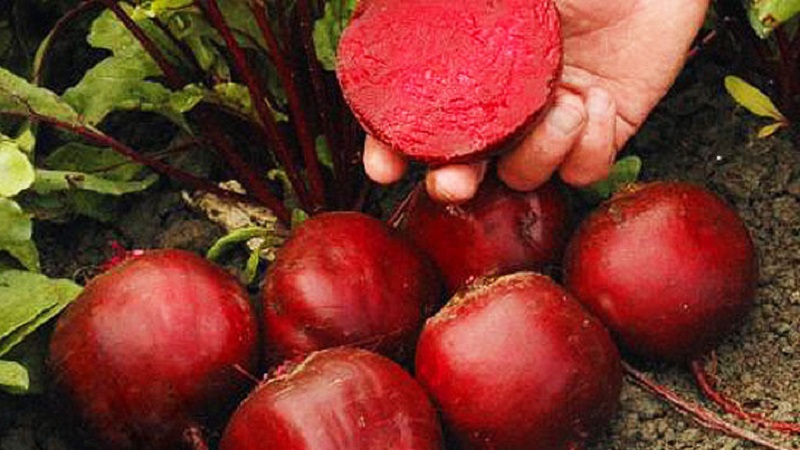
Fruit taste is rich, sweet... They contain an increased amount of dry matter, due to which the beets are stored for a long time.
Will delight gardeners and high yield of the variety... At the same time, it is not difficult to care for him because of the high immunity to many diseases inherent in the culture.
Main characteristics
Detroit's characteristics make it a gardener favorite. With resistance to adverse environmental conditions, it has a high yield and excellent fruit taste.
Detailed description of the variety - in the table.
| Parameters | Indicators |
| Fruit | Small, smooth, even rounded fruits. The weight of each is within 100-200 g. The color is maroon inside and outside. There are no light spots and rings. The beets taste sweet. It contains up to 14.2% sugar. The dry matter content varies between 17-21%. |
| Yield | High. Up to 600 kg of crops are harvested from one hundred square meters. |
| Transportability | High. Due to the content of a large amount of dry matter, the fruits are not damaged during transportation and are stored for more than six months without changing the taste. |
| Growing conditions | Cold-resistant variety. Suitable for growing outdoors in all regions of our country. In cities with extremely cold climates, beets are grown under film. |
| Immunity | Tall. Detroit is not afraid of major plant diseases. |
| Ripening terms | Medium early. The first crop is harvested within 95-100 days after sowing the seeds. |
Agrotechnics
Detroit beet intended for open field cultivation in central and southern regions... Cultivation is also possible in Siberia and more northern regions under the film.
For beets, both black earth and loam are suitable.... It grows best in areas with high humidity. It is important to choose the right predecessors for this culture. The best yields are observed in the beds where nightshades, legumes, onions and cucumbers previously grew.
The selected area of the garden is prepared in the fall... The soil is dug to a depth of 20-25 cm and cleared of plant residues. Then rotted manure or humus is introduced onto the surface (6 kg per 1 sq. M). Fertilizers are mixed with soil.
Note! Beets love slightly acidic soils. The indicators are checked using a litmus test. If they are increased, then dry lime or ash is added to the soil.
In the spring, the beds are leveled with a rake... The formed weeds are removed, the soil is watered with a solution of copper sulfate - to disinfect the soil.
Landing
Beets are planted by seedling and seed methods... In the first case, the crop appears earlier, in the second, the plants are more hardy.
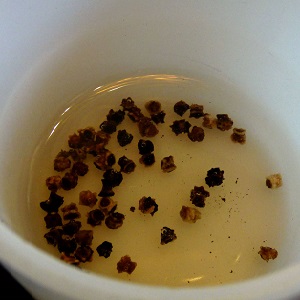 Before proceeding with sowing seeds, they are prepared. The preparation of planting material includes the following steps:
Before proceeding with sowing seeds, they are prepared. The preparation of planting material includes the following steps:
- Selection of quality seeds. If purchased certified planting material is used, then it is enough to check its expiration date. If self-collected seeds are taken for planting, the largest specimens are selected without visible damage.
- Disinfection of seeds. The planting material is soaked for an hour in a light pink solution of potassium permanganate. Then it is washed under running water.
- Stimulation of seed growth. This procedure involves soaking the planting material.
There are several ways to stimulate the growth of planting material.... The list contains the most common ones:
- A piece of cloth folded several times is placed in a container, which is moistened with warm water. Seeds are spread on it. They are covered with two layers of wet cloth from above. The container with the planting material is placed in a warm place. The germination procedure takes 2-3 days. During this time, care must be taken to keep the fabric damp.
- The seeds are soaked in water at room temperature for 2-3 days. The liquid is changed every 3 hours.
- The planting material is soaked in water at room temperature for four days. Swollen specimens are freed from excess liquid and transferred to the refrigerator for a week.
Council. Beet seeds have the ability to grow together. Such specimens should not be separated, as this will lead to damage to the planting material.
Seeds
To grow beets by seed, planting material is sown in early May... By this time, the soil at a depth of 10 cm should warm up to a temperature of 10 ° C. Sowing of seeds in winter is also possible. In this case, the planting material is placed in the ground in the first half of November.
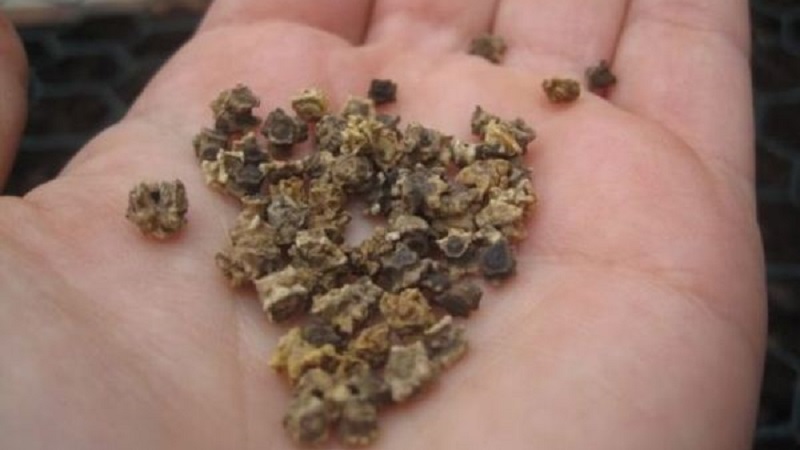
After preparing the soil at a distance of 15 cm from each other, make grooves 3 cm deep... They are abundantly moistened with water, pouring out at least two buckets per 1 sq. m. The bottom of each groove is compacted. Seeds are spread into the grooves at a distance of 3 cm from each other. A layer of soil (preferably peat) is sprinkled on top, which is not compacted.
If beets were planted in winter, the beds must be mulched with humus or peat. This will protect the planting material from frost.
For the whole season, beets are thinned 2 times... The first is when two true leaves appear (there should be 3 cm of free space between the plants). The second - after the formation of the fifth leaf (a distance of 8 cm is left between the beets). Thinning leaves the strongest plants.
It can be useful:
Seedlings
When growing seedlings seeds are sown in the first half of April... Plants are transplanted into open ground in a month. The beets are sown in deep boxes. They are pre-disinfected by soaking in boiling water or a solution of potassium permanganate.
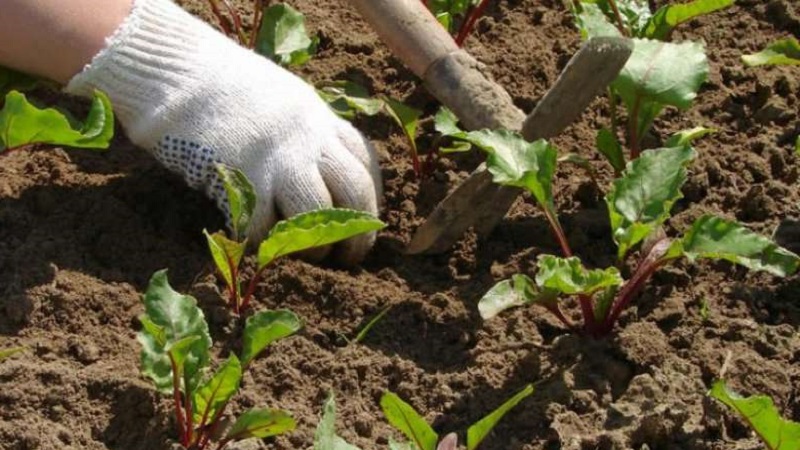
The soil for beets is prepared from peat, black soil and sandmixed in equal proportions. The soil is also disinfected by pouring a dark pink solution of potassium permanganate or boiling water. Another option is to ignite the soil mixture in the oven.
In the box, grooves are made 1.5 cm deep at a distance of 4 cm... Seeds are placed in them, the gap between which should be at least 2 cm.After the seeds germinate and the first true leaves appear on them, the crops are thinned so that a distance of at least 3 cm remains between the plants.
Water the seedlings as the soil dries... Beets are a moisture-loving plant, so they use a lot of warm, settled water.
For the entire period of growing seedlings, it is recommended to add biohumus once. This is not necessary if the seedling soil has been mixed with humus.
Important... A week before planting plants in open ground, they begin to harden. To do this, in the warm time of the day, boxes with seedlings are taken out into the fresh air. The residence time of beets on the street is increased gradually.
Seedlings are planted in open ground in the first half of May... During this time, 3 true leaves should form on the seedlings. When planting seedlings in open ground, maintain a distance of 8 cm. After picking, the plants are watered, spending 1 sq. m 2 buckets of water.
The beds are mulching hay, straw or humus. For the first two weeks at night, the beets are covered with foil.
Plant care
Beetroot requires regular and quality care. The list contains basic rules:
- Beets are watered only 2 times per season. In a rainy summer, it is not necessary to moisten the soil. For irrigation, use settled water at room temperature. One plant is used for 1 sq. m 20 l of liquid.
- After each watering, the soil is loosened. This destroys the earthen crust, which inhibits root air exchange and prevents moisture from spreading evenly between the beet roots.
- Weeds are regularly removed, which often lead to their death at the initial stage of beet development. Before manual weeding, it is recommended to spray the beds with special preparations that lead to the death of weeds. To do this, prepare a solution of 3 g of ammonium nitrate and a liter of water or use 40 g of tractor kerosene. This amount is enough to process 1 sq. planting beets. Weeds remaining after this procedure are removed manually.
- During the season, beets are fed 2 times. The first is after the formation of the second leaf. For 1 sq. m make 8 g of ammonium nitrate and potassium salt. The second is shortly before the rows close. For 1 sq. m apply 16 g of potash and nitrogen fertilizers. Top dressing is added dry during the loosening process.
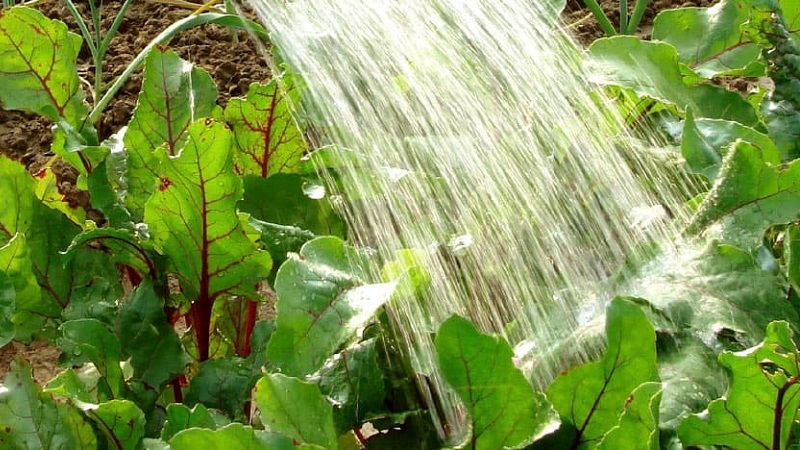
Features of cultivation and possible difficulties
When growing beets novice gardeners often face a number of problems.
The most common ones are:
- The tops are elongated, and the roots are small... This indicates that the beets lack light.
- Fomoz... The leaves are covered with reddish spots and black dots. The disease develops if the beets lack boron. To solve the problem, plants are sprayed with fertilizers containing this ingredient - for example, Folius boron.
- Thin, elongated root vegetable. Often this problem occurs when there is insufficient distance between the plants. That is why it is important to thin out beet plantings twice a season. There must be a distance of at least 8 cm between the plants.
- Plant death after thinning. This happens if the root system of the neighboring seedling has been damaged when pulling out the beets. To prevent this from happening, when thinning, unnecessary plants are not pulled out, but their tops are cut off.
- Beets are often sick. If all the rules for growing plants are followed, it is worth trying to sow seeds not in spring, but in winter. In this case, the plants will grow stronger, and the roots will turn out to be more tasty.
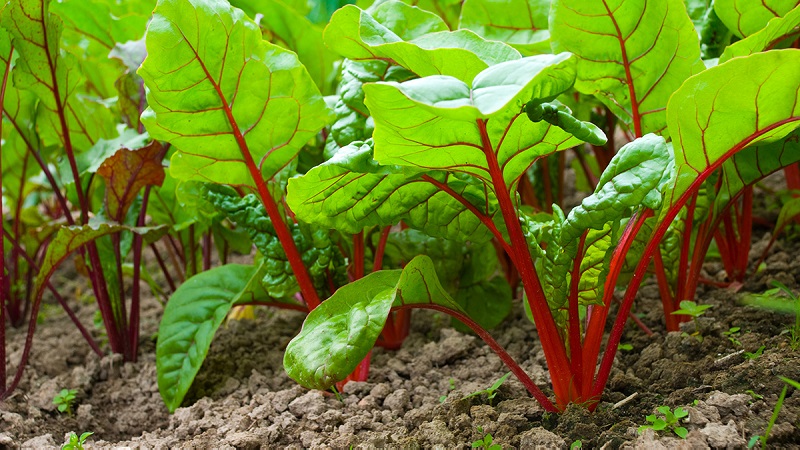
Diseases and pests
Detroit beets are highly resistant to plant diseases... Nevertheless, the rules of prevention should be followed:
- Treatment of planting material, garden tools, soil and containers for seedlings with disinfecting compounds. For example, a solution of potassium permanganate, copper sulfate, hydrogen peroxide.
- Compliance with crop rotation. When planting beets in the beds where carrots or cabbage grew, the likelihood of plant infection increases.
- Cleansing the beds from plant residues. Pathogens of infections remain on them.
- Treatment of plants with soapy water and light pink solution of potassium permanganate. This will protect them from insects.
- If pests have already started on the plants, they are treated with an ash solution. It is made from one part ash and ten parts water. Of the chemicals, "Entocid" and "Brunka" are often used.
Read also:
Harvesting and application of the crop
Detroit's first crop is harvested at the end of July... The best time for harvesting the entire crop is September. At this time, the fruits reach their maximum size and acquire a sweet taste.
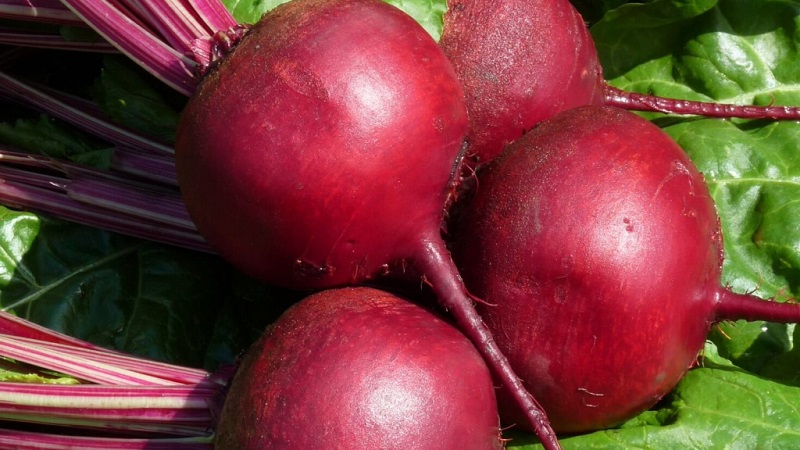
So that the beets lie all winter, it is dug up in dry weather. Store the crop in a dry, dark place. Detroit beets are used both for cooking hot dishes and salads, and for preservation. Its sweet taste makes this root vegetable suitable for consumption raw.
Advantages and disadvantages of the variety
Detroit advantages:
- rich sweet taste;
- high productivity;
- the same fruit size;
- high immunity to beet diseases.
No flaws were found in the variety.
Varieties of varieties
Detroit beets come in three varieties... Each of them has its own distinctive features:
- Detroit dark red - an early ripe variety. Differs in dark-burgundy roots with a uniform color and without light rings.
- Detroit 2 nero - mid-season high-yielding variety. It has a burgundy color and does not accumulate nitrates.
- Detroit 6 rubidus - early grade. Small roots are rounded and have a thin axial shaft.

Farmers reviews
Detroit has mostly positive reviews gardeners. For over 20 years it has been popular with farmers all over the world.
Victoria, Rostov: “Detroit beets have remained my favorite variety for five years now. She is not sick and gives a good harvest. I sow seeds in November directly into open ground. The fruits are small, round and very tasty ".
Gennady, Tula: “I have been growing Detroit for the second year. Chose on the recommendation of a neighbor. I sow seeds in open ground in spring. Already in August, I begin to harvest. The fruits are round, even and beautiful, as in the photo. Due to their small size, they are convenient to use for cooking ".
Conclusion
Detroit is a variety that will appeal to both experienced and novice gardeners. It has a high yield and is easy to care for. This beet is not afraid of diseases and cold snaps.
Detroit fruits are small and sweet, and contain high amounts of sugars and solids. Such a crop is stored for a long time.